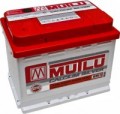Polarity
In this case, polarity refers to the location of the terminals on the battery. Traditionally, it is named according to the location of the "+" terminal when looking at the battery from the front (or, in the case of side terminals, from the side closest to which they are located).
—
+ left. In relation to passenger cars, such polarity in the CIS countries is often called "direct" or "ours". At the same time, in trucks (see "Purpose") the situation is the opposite - the left "plus" is the European standard.
—
+ right. In passenger cars, the right "plus" is typical mainly for European models, for which this polarity in the CIS countries received the unofficial name "euro" or "reverse" (as opposed to the domestic "direct"). In batteries for trucks, everything is the other way around.
— + right/ + left. This marking means that this battery model is available with both right and left “plus” (see above), and you can choose the option depending on the car model.
Note that the above division into “direct” and “reverse” polarity is not absolute, and in any case, before purchasing a battery in your car, this parameter should be clarified separately.
Battery capacity
The electrical capacity of a battery, in other words, the amount of energy stored by a battery when fully charged. The capacity value is expressed in amp-hours and indicates the number of hours during which a fully charged battery will be discharged to the minimum allowable charge, delivering a current of 1 ampere to the load. For example, a capacity of 40 Ah means that the battery is capable of delivering a current of 1 A for 40 hours, or 2 A for 20 hours, etc. In fact, a more capacious battery gives more attempts to start the engine, and is also able to work longer at a low load (for example, when powering a car audio system).
The capacity requirements for different transport types differ markedly. So, in motorcycle batteries, it rarely exceeds 20 Ah, the average value for passenger cars is 40-80 Ah (but there are options for 100 Ah or more), and for heavy equipment like buses, an acceptable capacity starts somewhere from 100 Ah. The optimal value of the battery capacity is often indicated by the manufacturer in the characteristics of the vehicle, and when choosing a model by capacity, you should focus primarily on these figures.

